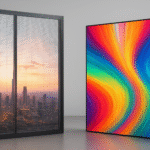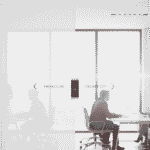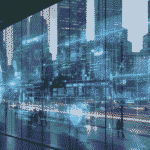Interior design has evolved far beyond just aesthetics. Today, it is as much about functionality, technology, and versatility as it is about visual appeal. One innovative solution that blends all of these elements seamlessly is switchable film. This modern marvel allows users to change glass from transparent to opaque instantly, offering both privacy and elegance. Companies like Glasstronn – Best Switchable Glass Manufacturer, are leading the charge in bringing this technology to homes, offices, and commercial spaces, enabling people to reimagine the way spaces are used and experienced.
As designers and homeowners look for smarter, more flexible solutions, switchable film is gaining attention for good reason. Whether it’s enhancing privacy without sacrificing natural light or giving a space a futuristic feel, this technology is setting new standards in modern interiors.
What is Switchable Film?
Switchable film, also known as smart film or PDLC (Polymer Dispersed Liquid Crystal) film, is an advanced material that can alter its appearance from clear to frosted with the flip of a switch or touch of a remote. When electricity flows through the film, the liquid crystal molecules align, allowing light to pass through—making the glass clear. When the power is off, the molecules scatter, turning the glass opaque.
This simple but powerful mechanism enables users to control visibility and privacy instantly, making it a favorite in both residential and commercial spaces.
Key Benefits of Switchable Film in Interior Design
1. Instant Privacy On Demand
One of the most significant advantages of switchable film is controllable privacy. In places like bathrooms, bedrooms, meeting rooms, and glass-walled offices, privacy is often a challenge. Traditional curtains or blinds can obstruct light, collect dust, and break the minimalist look.
Switchable film offers an elegant alternative. With a touch or remote, users can change the transparency of the glass instantly—enabling full privacy when needed and full transparency when not.
2. Maximized Natural Light
Natural light is essential in interior design. It creates an open, refreshing, and productive environment. However, gaining privacy often means losing access to daylight.
Switchable film solves this by offering privacy without compromising sunlight. When switched to transparent mode, it allows maximum light flow. In opaque mode, it still diffuses light, maintaining brightness while blocking views. This makes it ideal for urban apartments, clinics, salons, and workspaces.
3. A Sleek, Minimalist Aesthetic
Modern interior design thrives on clean lines, open spaces, and simplicity. Bulky blinds, curtains, or partitions often interfere with that look. Switchable film supports a minimalist and futuristic aesthetic.
It integrates directly into the glass without requiring additional hardware. When used in windows, doors, shower enclosures, or glass walls, it maintains the sleek design while adding a touch of high-tech sophistication.
4. Improved Space Utilization
Glass partitions are commonly used to divide areas in homes and offices while keeping the space visually open. But sometimes, privacy is still needed in these areas.
Switchable film offers dynamic functionality. For example, an open-concept office can use switchable film on meeting room walls. The space remains open when meetings are not in session, and the walls turn opaque when privacy is needed—eliminating the need for heavy partitions or permanent structures.
5. Energy Efficiency
Modern smart films can contribute to better energy management. Some switchable films offer solar control properties—reducing glare, controlling heat, and improving insulation. By limiting UV and infrared light, they reduce the load on air conditioning systems, especially in large glass-covered buildings.
This not only saves money on energy bills but also supports sustainable design practices—something increasingly important in today’s eco-conscious world.
6. Enhanced Hygiene and Easy Maintenance
Unlike fabric blinds or curtains that gather dust and germs, switchable film is easy to clean and requires minimal maintenance. It offers a hygienic solution for hospitals, clinics, and food-related spaces, where cleanliness is paramount.
Its smooth, wipeable surface ensures that bacteria and allergens do not accumulate, making it suitable for both homes and commercial environments.
7. Privacy
Some switchable glass installations come with sound insulation benefits. While not entirely soundproof, they can help reduce noise transmission, especially when laminated or used with acoustic interlayers. This makes them ideal for private offices, boardrooms, and consultation rooms.
8. Security and Safety
Switchable film adds an additional layer of protection to glass surfaces. It can be applied on laminated or toughened glass, enhancing its strength. In case of breakage, the film helps hold shattered glass pieces together, reducing the risk of injury.
Moreover, the opaque mode can obscure visibility from outside, offering discretion for valuables or confidential materials inside.
Common Applications in Modern Interiors
1. Residential Spaces
- Bathrooms: Glass shower enclosures or partitions with switchable film offer privacy when needed without enclosing the space visually.
- Bedrooms: Large glass windows or sliding partitions can switch to opaque for privacy during nighttime.
- Home Theatres: With a switch, the room can transform into a dark viewing space without needing curtains.
2. Office Interiors
- Meeting Rooms: Privacy during discussions with the ability to make the room visually open afterwards.
- Executive Cabins: Transparent when unoccupied, opaque when in use—ensuring a balance of openness and discretion.
- Reception Areas: Enhance the brand image while also controlling visibility of back-office spaces.
3. Retail and Showrooms
- Display Windows: Dynamic displays that switch between product reveals and privacy.
- Trial Rooms: High-end fashion stores use switchable film to enhance the fitting room experience.
- Luxury Stores: Used to section off VIP areas or confidential service zones.
4. Healthcare and Clinics
- Consultation Rooms: Instantly create private areas for patient discussions.
- Operation Theatres: Maintain hygiene while managing visibility into sensitive areas.
- Patient Wards: Offer patients control over their privacy and light preferences.
5. Hospitality and Hotels
- Guest Rooms: Bathroom glass walls that turn opaque at the touch of a button.
- Conference Rooms: Versatile settings for corporate guests.
- Spa Areas: Provide tranquil, private spaces without feeling enclosed.
Installation and Integration
Switchable film is versatile and can be applied to existing glass surfaces or incorporated during new construction. It can be retrofitted in most cases and comes in adhesive formats.
Installation involves:
- Cleaning the glass surface
- Applying the film evenly
- Connecting to a power source
- Testing and integrating with smart home/office controls
It can be controlled through wall switches, remotes, mobile apps, or integrated with smart systems like Alexa or Google Home.
Cost Considerations
The price of switchable film depends on:
- Size of the glass
- Quality of the film
- Type (adhesive or non-adhesive)
- Installation complexity
- Control mechanisms
While the initial cost may be higher than traditional curtains or blinds, the long-term benefits in aesthetics, privacy, hygiene, and energy savings often make it a worthwhile investment.
Conclusion
The future of interior design is smart, clean, and adaptable—and switchable film is a perfect embodiment of this vision. From homes to corporate spaces, healthcare to hospitality, this technology is reshaping how people experience built environments.
By offering instant privacy, better light control, energy efficiency, and a futuristic look, switchable film is becoming a must-have for modern spaces. It removes the old compromises between light and privacy, openness and confidentiality.
Companies like Glasstronn are making this innovation accessible and reliable, ensuring quality and smooth integration into today’s smart interiors. Whether you’re designing a contemporary home or a high-end office, switchable film adds both functionality and flair.
As more designers and homeowners look toward smart solutions, Glasstronn continues to lead the way—redefining how we think about glass, space, and privacy.





